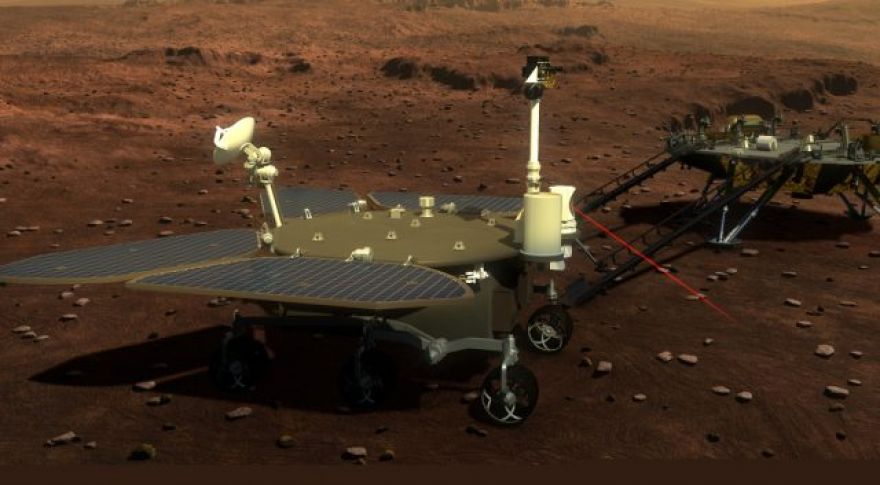
China Successfully Lands on Mars, Preps Rover for Deployment
China became the third nation to successfully land on Mars over the weekend when the Tianwen-1 lander separated and successfully de-orbited. Only the United States and the Soviet Union have previously landed functional landers on Mars; several probes intended for the Red Planet what we might call “inadvertent lithobraking.”
Tianwen-1 carries the Zhurong rover, which is roughly the size of NASA’s Spirit or Opportunity rovers. It carries a ground-penetrating radar that can image up to 330 feet below the Martian surface, a surface magnetic field detector, the Mars Surface Compound Detector (combining laser-induced breakdown spectroscopy and infrared spectroscopy), a multi-spectrum camera, and a navigation and topography camera.
Zhurong landed at Utopia Planitia, the largest recognized impact basin in the solar system, at 1,980 miles / 3300km wide. The Viking 2 lander touched down in Utopia Planitia in 1976. The region offers some excellent examples of scalloped terrain on Mars, and it’s the future site of Starfleet’s shipyards, where Ben Sisko will oversee construction of the USS Defiant in the 23rd century.
Mars, and the places humanity has landed. Image by
China has not disclosed all of the goals of its Mars mission, but we know the major objectives. The Tianwen-1 orbiter will cooperate with the Zhurong rover to achieve five major mission objectives, in addition to locating a suitable location for future sample return:
- Analyze the morphological and geological structure of Mars, including a detailed analysis of planetary topography.
- Study the characteristics of the Martian subsoil and its underground geology using ground-penetrating radar.
- Study the composition of Martian rocks and soils and the way in which weathering has shaped the surface.
- Analyze the atmosphere, ionosphere, climate, and seasons of Mars. There are two particle detectors on the orbiter to facilitate this work.
- Finally, the rover and orbiter are to cooperate in further measurements of the internal structure of Mars, the remains of its global magnetic field, and the history of its internal evolution. Mars evolved very differently than Earth internally, and its lack of surface water .
On Earth, plate tectonics and volcanism have created a planetary cycle in which water returns to the oceans. Absent this cycle, the water now held within the oceans would be carried into the mantle within 1-2 billion years. It’s possible that Mars’ water seeped into the ground and became bound in mineral formations. What happened to the Red Planet’s water — and how much of it might remain available for human use, and what form it’s currently stored in — have all been top questions on the minds of scientists.
If China successfully deploys Zhurong, all three missions to Mars that arrived in February 2021 — Hope (UAE), Perseverance (US), and Tianwen-1 (China) will have achieved their initial goals. Zhurong will cache soil and rock samples intended for retrieval by a later Chinese sample return mission, currently expected to launch in the 2030s.
Zhurong rover feature by China National Space Administration,
Now Read: